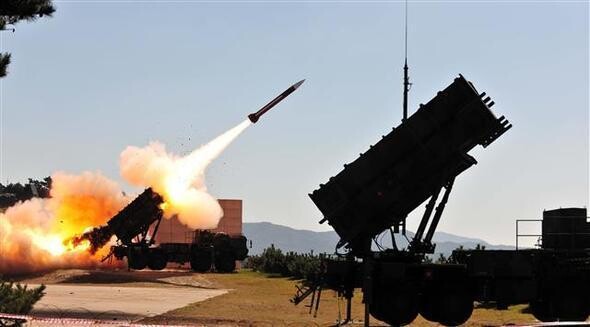hankyoreh
Links to other country sites 다른 나라 사이트 링크
Minister says no US missile system for South Korea

By Park Byong-su and Ha Eo-young, staff reporters
Minister of National Defense Kim Kwan-jin said South Korea was “obviously” not going to take part in the US missile defense system and would only be pursuing its own Korean Air and Missile Defense (KAMD) system.
Speaking with the press on Oct. 16, Kim said the US system was “not right for us in terms of suitability and need considering the Korean Peninsula’s short range, or the astronomical cost, which is likely to be in the trillions of won [billions of US dollars].”
“Nor do I think the public will agree to it,” he added.
Analysts said Kim appeared to have called the previously unscheduled press meeting in a hurried effort to silence questions about whether the government was planning to join the US program, which arose after a parliamentary audit of the ministry by the National Assembly National Defense Committee on Oct. 14.
On Oct. 15, the ministry sent out a press release repudiating as “completely untrue” press reports that South Korea was trading participation in the US system for a postponement of the transfer of wartime operational control (OPCON).
Kim also denied the tradeoff, saying there had “never been any requests whatsoever from the US with regard to the missile defense system.”
“Our missile defense system is for intercepting North Korean missiles, and its goals, scope, and capabilities are different from those of the US system, which is fundamentally aimed at defending the US mainland,” he said.
Kim also responded to US Secretary of Defense Chuck Hagel’s Oct. 2 remarks that the South Korea and US defense systems required “interoperability.”
“It means that we get information from the US on North Korean missile detection, identification, and trajectories, and it’s very useful because they’re providing us with equipment we don’t have,” he explained.
“Calling that ‘joining the US missile defense system’ is a leap of logic,” he added.
Kim went on to say that South Korea had “no need” for the SM-3 high altitude interceptor missile because “ours is low-tier defense.” He added that the military was not yet considering the Terminal High Altitude Area Defense (THAAD) interception system.
“Instead, we’re looking at upgrading our Patriot missile interception system from a PAC-2 to a PAC-3 and developing the [long-range] L-SAM surface-to-air missile by 2022 and the [medium-range] M-SAM surface-to-air missile by 2020,” he said.
“So we would have multi-layered defense, with different types of missiles covering our low-altitude defense,” he added.
Discussing the delay in the selection of a next-generation fight (F-X), Kim said a delay of about one year until the F-X became operational was “inevitable.”
“We intend to work as quickly as possible over the next year to minimize the gap in our firepower,” he said.
Please direct questions or comments to [english@hani.co.kr]

Editorial・opinion
![[Editorial] Does Yoon think the Korean public is wrong? [Editorial] Does Yoon think the Korean public is wrong?](https://flexible.img.hani.co.kr/flexible/normal/500/300/imgdb/original/2024/0417/8517133419684774.jpg) [Editorial] Does Yoon think the Korean public is wrong?
[Editorial] Does Yoon think the Korean public is wrong?![[Editorial] As it bolsters its alliance with US, Japan must be accountable for past [Editorial] As it bolsters its alliance with US, Japan must be accountable for past](https://flexible.img.hani.co.kr/flexible/normal/500/300/imgdb/original/2024/0417/6817133413968321.jpg) [Editorial] As it bolsters its alliance with US, Japan must be accountable for past
[Editorial] As it bolsters its alliance with US, Japan must be accountable for past- [Guest essay] Amending the Constitution is Yoon’s key to leaving office in public’s good graces
- [Editorial] 10 years on, lessons of Sewol tragedy must never be forgotten
- [Column] A death blow to Korea’s prosecutor politics
- [Correspondent’s column] The US and the end of Japanese pacifism
- [Guest essay] How Korea turned its trainee doctors into monsters
- [Guest essay] As someone who helped forge Seoul-Moscow ties, their status today troubles me
- [Editorial] Koreans sent a loud and clear message to Yoon
- [Column] In Korea’s midterm elections, it’s time for accountability
Most viewed articles
- 1Samsung barricades office as unionized workers strike for better conditions
- 2[Column] The clock is ticking for Korea’s first lady
- 3[Editorial] When the choice is kids or career, Korea will never overcome birth rate woes
- 4Why Israel isn’t hitting Iran with immediate retaliation
- 5[News analysis] After elections, prosecutorial reform will likely make legislative agenda
- 6S. Korea, Japan reaffirm commitment to strengthening trilateral ties with US
- 7Japan officially says compensation of Korean forced laborers isn’t its responsibility
- 8[Editorial] As it bolsters its alliance with US, Japan must be accountable for past
- 9[Editorial] Does Yoon think the Korean public is wrong?
- 10[Guest essay] How Korea turned its trainee doctors into monsters